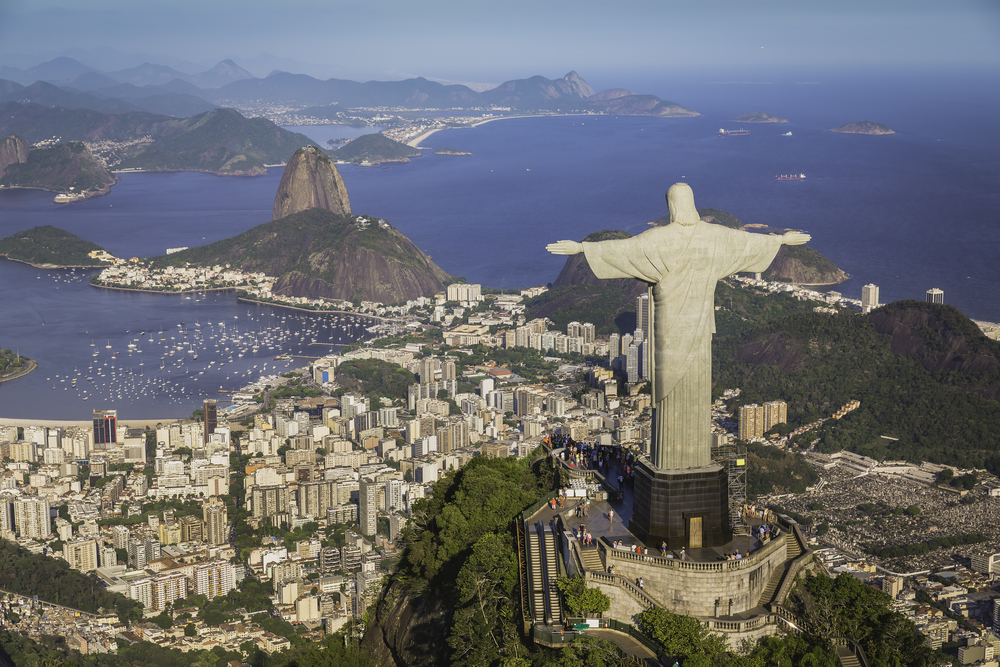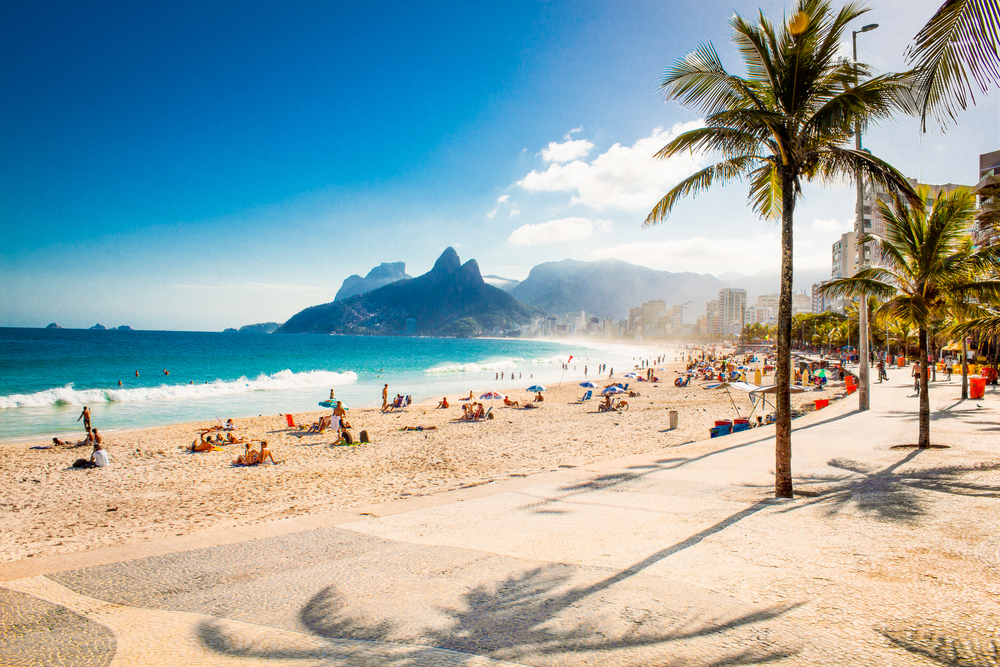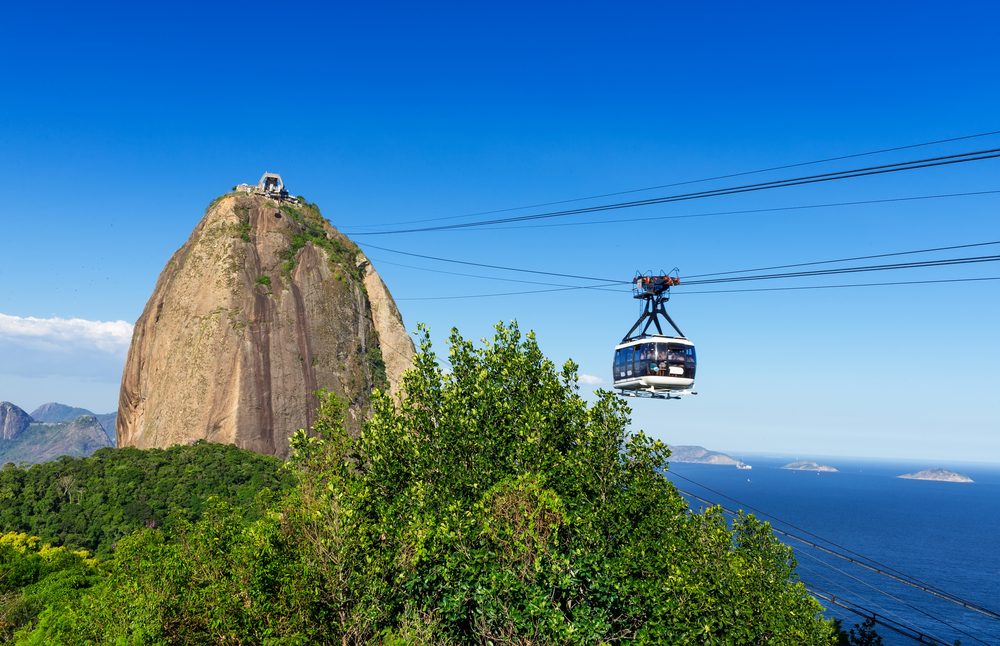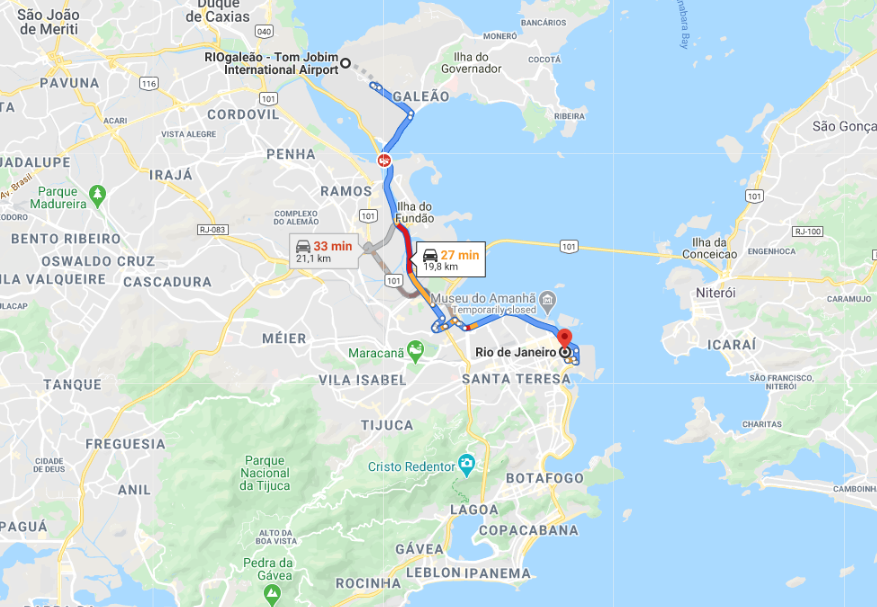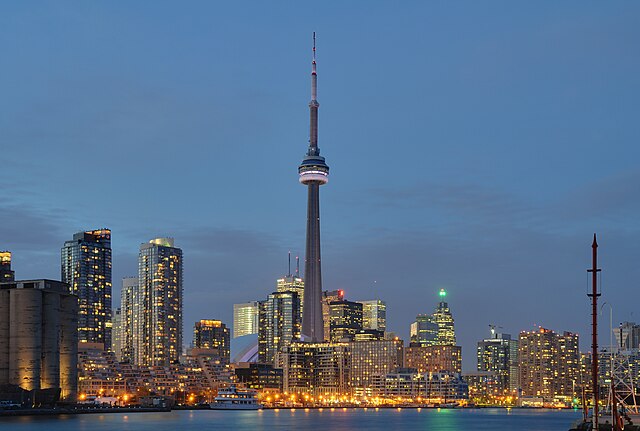With Sugar Loaf mountain and the staue of Christ the Redeemer overlooking its spectacular harbour, Rio de Janeiro is one of the world’s most recognisable cities. Home to Copacabana Beach, Samba dancing and its Carnival celebrations, Rio attracts more than two million annual visitors. The peak summer months are from December to March with the city packed to the rafters during Carnival. During this period daytime temperatures can reach an unbearable 40C so for many a winter visit between the months of June and August is preferable. March and April aren’t recommended for visits due to the likelihood of heavy rainfall.
Rio de Janeiro has a fairly poor reputation for street crime which is off-putting to many would-be visitors. The main advice to tourists is to avoid the poor favelas which line the mountainsides overlooking the city. These neighbourhoods are home to violent drug gangs and are not safe to visit, even on guided tours. The main tourist areas include Ipanema, Copacabana, Leblon and Botafogo in the South Zone where there is little to worry about by day. At night the main danger is petty crime such as pickpocketing and bag snatching so standard advice for any large city applies.
Getting Around in Rio de Janeiro
The beachfront around Copacabana can easily be explored on foot although there’s a bike hire scheme which allows vistors to rent bikes by the hour or for several days. Cycle paths between Marina da Glória in the north and Ipanema in the south provide a great way to discover the coastline.
For travelling further afield the BRS (Bus Rapid System) network is efficient enough as is the Metro system which has three lines around the city. Taxis and Ubers are easily available. A trip on the Santa Teresa tram line from the tram station in Centro is recommended whilst local islands can be visited by means of ferries from the harbour. There are minibuses and a cog train which run up Corcovado to the Christ the Redeemer statue and a journey up Sugar Loaf Mountain by cable car is a must.
Tourist Attractions in Rio de Janeiro
Most of Rio de Janeiro’s tourist attractions, accommodation and famous beaches are located in the city’s South Zone (Zona Sul). Sights beyond this area include the Maracanã stadium in the North Zone and many historic buildings in the Centre.
Christ the Redeemer
Standing on the Cerro del Corcovado mountain to the west of central Rio de Janeiro is the world-famous statue of Christ the Redeemer (Cristo Redentor). This 38-metre high statue is the city’s most iconic symbol which was as one of the New 7 Wonders of the World in a global popularity poll in 2008. The best way to get there is to take a minibus from Praça do Lido on the eastern side of Copacabana Beach. Taxis and Ubers are also available to transport tourists up the mountain. A more traditional way to get there is by means of the Corcovado Train which departs from a station in the Cosme Velho neighbourhood. The journey takes 20 minutes and there are departures every half hour. Some visitors like to walk up the mountain but this is not recommended as muggings on the route are far too common.
Copacabana
Stretching from Ramos in the east to Abricó in the west, the white, sandy beaches of Rio are quite spectacular. Most famous of all is Copacabana Beach which is overlooked by a 4km long promenade lined with bars, restaurants, apartments and hotels in the city’s South Zone. Tourist accommodation prices here tend to be significantly higher than for similar establishments located just a few blocks in from the beach. This is a fun place to spend some time and is fairly safe, just don’t carry any valuables as petty theft on the beach is quite common.
Sugarloaf Mountain
Standing on a peninsula to the north of Copacabana this 396 metre high mountain is another of Rio’s world-famous attractions which is recognised by UNESCO as a World Heritage Site. Offering panoramic views over the city and Atlantic Ocean, it can be reached by cable car from Praia Vermelha via Morro da Urca. The Sugarloaf Cable Car runs every 30 minutes.
Maracanã Stadium
Any football fans visiting Rio de Janeiro will want to visit the city’s legendary football stadium which hosted the 1950 World Cup Final. That match saw Brazil beat Uruguay in front of a crowd of almost 200,000 fans. The stadium was renovated for the 2014 World Cup with a revised capacity of almost 80,000 and now hosts matches between the city’s top clubs (Flamengo, Fluminense, Botafogo, and Vasco da Gama). Within months of hosting the closing ceremony of the 2016 Summer Olympics the stadium fell into disrepair and stadium tours were ended. The stadium is located in the Maracanã neighbourhood in the city’s North Zone and can be reached by metro and train. Robberies around the stadium have been reported so would-be visitors should enquire about whether it’s currently safe to visit once in Rio.
Jardim Botânico do Rio de Janeiro
The city’s enormous botanical gardens are a must-see for anyone with time to spare on a visit to Rio. Located on the edge of the Tijuca rainforest, they are home to thousands of species of plants and plenty wildlife including capuchin monkeys, marmosets, sloths and some fascinating birdlife. The city zoo in Parque da Quinta da Boa Vista (north of Maracanã) is also worth a visit.
Arriving in Rio de Janeiro
International visitors to Rio de Janeiro will usually arrive at Galeão International Airport which lies approximately 20 km north of the city centre. Premium buses run to the downtown area from the airport every 30 minutes. City buses are best avoided for safety reasons. Whilst taxis are widely available they have a terrible reputation for ripping off new arrivals. A far better idea is to pre-book your airport transfer from Rio de Janeiro Airport and have a professional driver awaiting you on arrival. Uber is also an option from the airport with the app service widely used in Brazil.
A 2nd airport in Rio de Janeiro is Santos Dumont Airport which is located right in the city centre. This airport deals with domestic arrivals from all over the country. Passengers can take Premium buses from the airport or arrange a private transfer to hotels throughout Rio de Janeiro.
About Shuttle Direct
Shuttle Direct is one of the world’s most established and respected airport transfer providers. Our services are available throughout Europe as well as in North Africa, the Middle East, Southeast Asia and South America. Our friendly local drivers will ensure your safe, economical and convenient passage to and from the airport, cruise terminal or major train station of your choice with a minimum of fuss. Book your transfer with our easy to use online booking system and leave the rest up to us!


